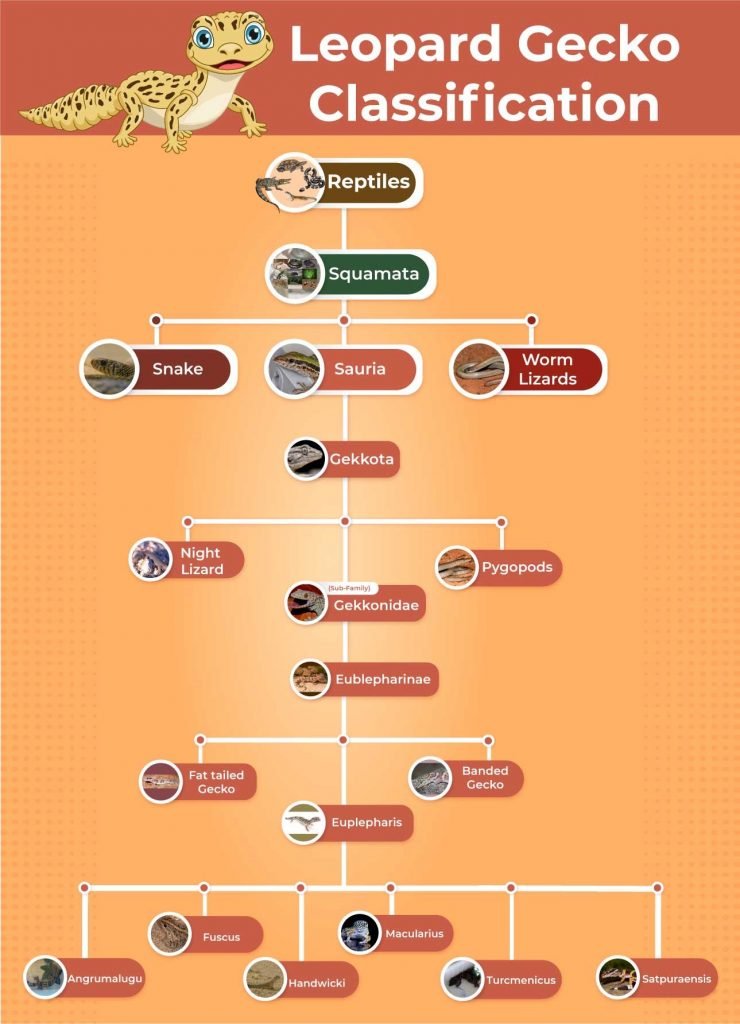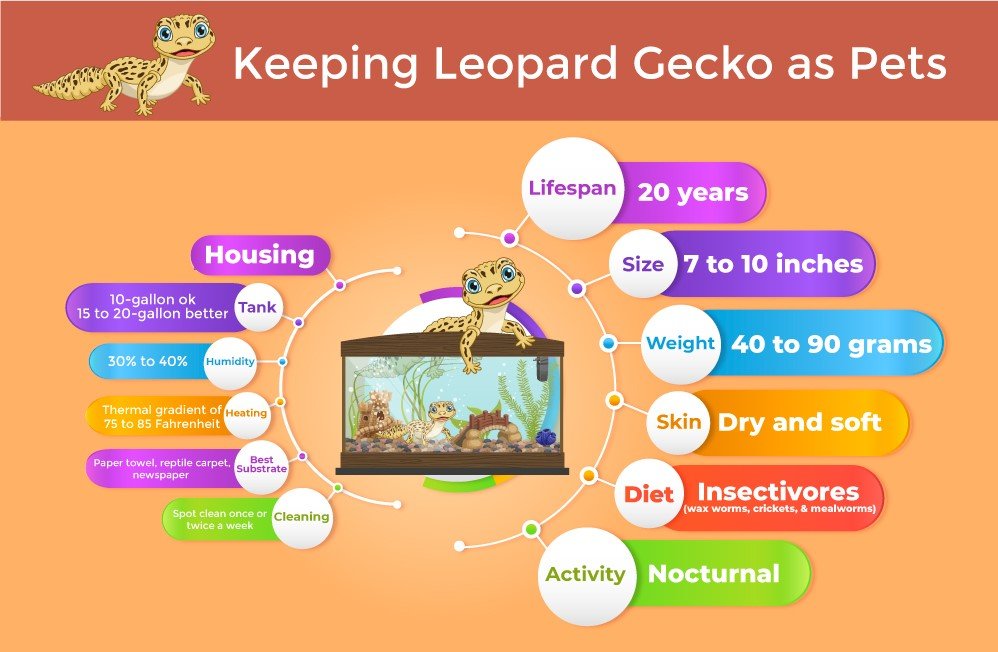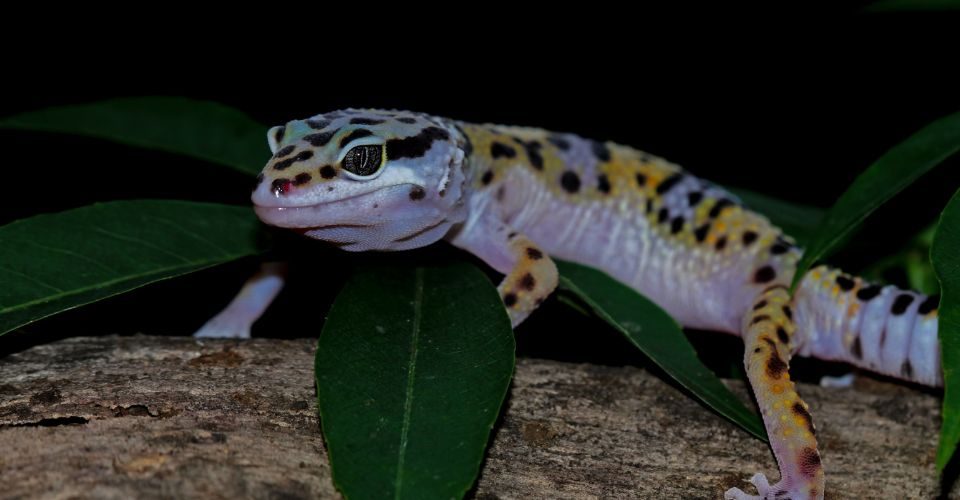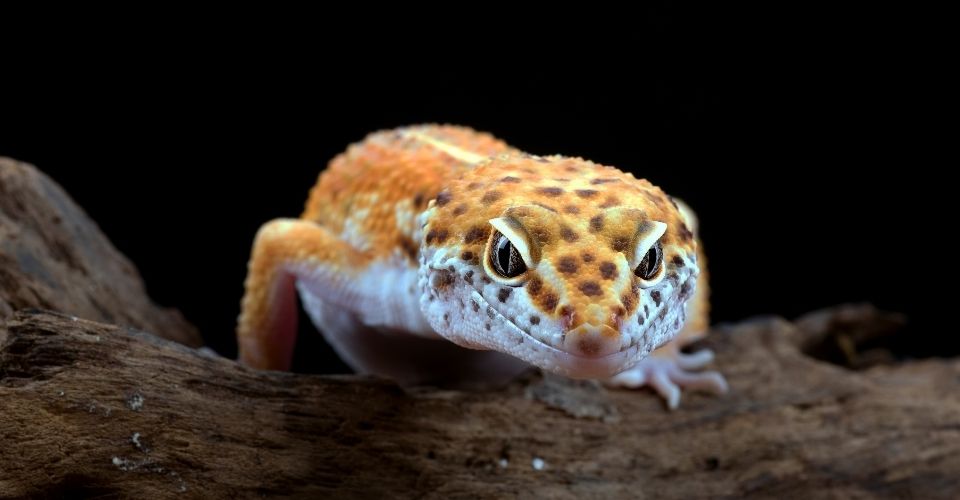Leopard geckos, scientifically known as Eublepharis macularius, are one of the most popular pet reptiles. Among hundreds of different species of pet geckos, Leopard geckos are the most popular gecko pets and are readily available. They have been captive-bred for over three decades in the United States.
Leopard geckos soaring popularity among pet reptiles is often attributed to their hardy nature and minimal care requirements. They make a great choice for first-time pet reptile owners, as they are easygoing and docile personalities. Leopard geckos not only fascinate viewers by their exciting dotted patterns but also by their spunky nature and interesting movements.
Leopard Geckos
Geckos, including leopard geckos, are lizards—but they have several distinctive traits. Leopard geckos belong to an incredibly diverse family of lizards called Gekkonidae, which includes over 800 different species of geckos, including Leopard geckos. All these different species of geckos are different from one another.
Each gecko species might look superficially the same, but at a detailed level, they all are unique. Before diving into Leopard geckos’ details, you should take a quick look at their species overview.
Species Overview
Common Name: Leopard gecko
Scientific Name: Eublepharis macularius
Family: Gekkonidae
Size
Hatchlings: 1 to 3 inches (2.5 to 7.5 cm)
Adult size
Male: 8 to 10 inches (20 to 25 cm)
Female: 7 to 8 inches (17.5 to 20.5 cm)
Weight
Hatchling: 2 to 5 grams
Classifying Leopard Geckos

Geckos are reptiles belonging to the class Reptilia. In the class Reptilia, they are placed in order Squamata, in which they are grouped with snakes, lizards (Sauria), and worm lizards. But as we move further down the classification tree, we find out they are different from snakes and worm lizards and are thus placed in suborder Sauria (lizards). In the infraorder Gekkota, they are placed with night lizards and pygopods. But further subdivision clarifies that Leopard geckos are different from pygopods and night lizards; they belong to the family of all geckos—Gekkonidae.
While the family Gekkonidae includes all species of geckos, Leopard geckos belong to a special subfamily, Eublepharinae. Only those gecko species that have real functional (moving) eyelids are placed in this class. Iranian fat-tailed geckos and banded geckos are placed in the subfamily Eublepharinae as they also have functional eyelids and are thus often called eyelid geckos.
All other species of geckos have transparent and fixed eyelids; known as spectacle, like snakes—their eyes always remain open. All geckos with fixed transparent eyes can clean their eyes with their tongue.
Geckos belonging to the sub-family Eublepharinae have the genus name Eublepharis, meaning eyelid. Here, all the geckos having true eyelids are grouped together. Further, the species name macularius specifies that the respective gecko is Eublepharis macularius—Leopard gecko. Where “Eublepharis” means “good eyelids,” “Macular” means “spotted” in Latin.
Popular Varieties of Leopard Geckos
There are five officially recognized subspecies of Leopard geckos, but not all of them have common names. Only two of the five subspecies have common names—Eublepharis macularius is commonly known as Leopard gecko, and Eublepharis m. afghanicus is known as Afghan Leopard gecko. Where the Leopard gecko was first discovered in 1854, the Afghan Leopard gecko—present in south-eastern Afghanistan and Pakistan—was discovered only in 1976.
Leopard gecko subspecies that do not have a common name are a) Eublepharis m. smithi described in 1981, b) Eublepharis m. fasciolatus described in 1864, c) Eublepharis m. Montanus was discovered in 1976. While Smithi can be found in the north-western part of India, fasciolatus and Montanus are native to Pakistan only.
| Scientific Name | Common Name | Discovered in | Native to | Distinguishing Features |
| Eublepharis macularius | Leopard gecko | 1854 | Desert regions of Afghanistan, Pakistan, Northwest India | Dark brown to black spots on the yellow backgroundDry but soft skin |
| Eublepharis m. afghanicus | Afghan Leopard gecko | 1976 | South-Eastern Afghanistan (along Kabul River and its tributaries | More striped than spottedsmaller of all subspeciesSlenderer and lacking fat tails |
| Eublepharis m. smithi | No common name | 1981 | Pakistan and India | Not much is known about this sub-species |
| Eublepharis m. fasciolatus | No common name | 1864 | Pakistan range | Pastel lookingLonger body as compared to MontanusVery vocal as babies, especially |
| Eublepharis m. montanus | No common name | 1976 | Pakistan range | Smaller and slenderer as the Afghan Leopard geckoDistinctive blue mark on head spanning eye to eye |
In addition to the above discussed five officially recognized Leopard gecko subspecies, Eublepharis Fuscus is often called a subspecies of Leopard geckos and is thus also known as the West-Indian Leopard gecko. They are considered the largest member of the Leopard gecko family, but as of 1997, they have been elevated to full species status. But they still belong to the genus Eublepharis as they also have true eyelids like the rest of the members of the genus. Eublepharis hardwickii (often confused as a fat-tailed gecko) is also from India—Eastern India.
Leopard Gecko Colors, Patterns, and Morphs
Today, Leopard geckos are available in a wide variety of stunning color combinations and patterns due to the over three decades of selective breeding in captivity. The average Leopard geckos are yellow with dark brown to black spots, but the color and pattern are extremely variable due to selective breeding. The number of Leopard gecko morphs has been increasing rapidly as new morphs keep coming to the fore, with many herpetoculturists selectively breeding them as a hobby.
At present, there are over 100—according to some resources, well over 150—different morphs of Leopard geckos present across the world. From the enormous variety of morphs available, we have listed some of the most common Leopard gecko morphs.
| Black Night | Mack Snow | Tangerine | Lavender |
| Albino | Blizzard | Giant | Baldy |
| Hyper Melanistic | Hypo Melanistic | Black Pearl | Aurora |
| Firewater | Dreamsicle | Enigma | Godzilla Super Giant |
| Lemon frost | Ember | Nova | Red Stripe |
| Raptor | Snow | Carrot tail | Bandit |
| Bandit | Eclipse | Baldy | Typhoon |
| Phantom | Hybino | Lemon frost | Halloween Mask |
| Aberrant | Banana Blizard | Reverse Stripe | Inferno |
Keeping Leopard Gecko as Pets

Because of their Leopard-like spots, easy-to-care-for, and hardy nature, Leopard geckos have become one the most popular pet reptiles. To keep your Leopard gecko happy and healthy, you just have to imitate the natural Leopard gecko habitat and provide a friendly substrate, suitable thermal gradient, lighting setup, humidity levels, and feed a healthy diet. A healthy Leopard gecko diet consists of small insects like mealworms, crickets, waxworms, etc.
If you are developing an interest in Leopard geckos, you may want to take to check out Leopard Gecko Facts: 15 Interesting Facts About Leopard Geckos.





